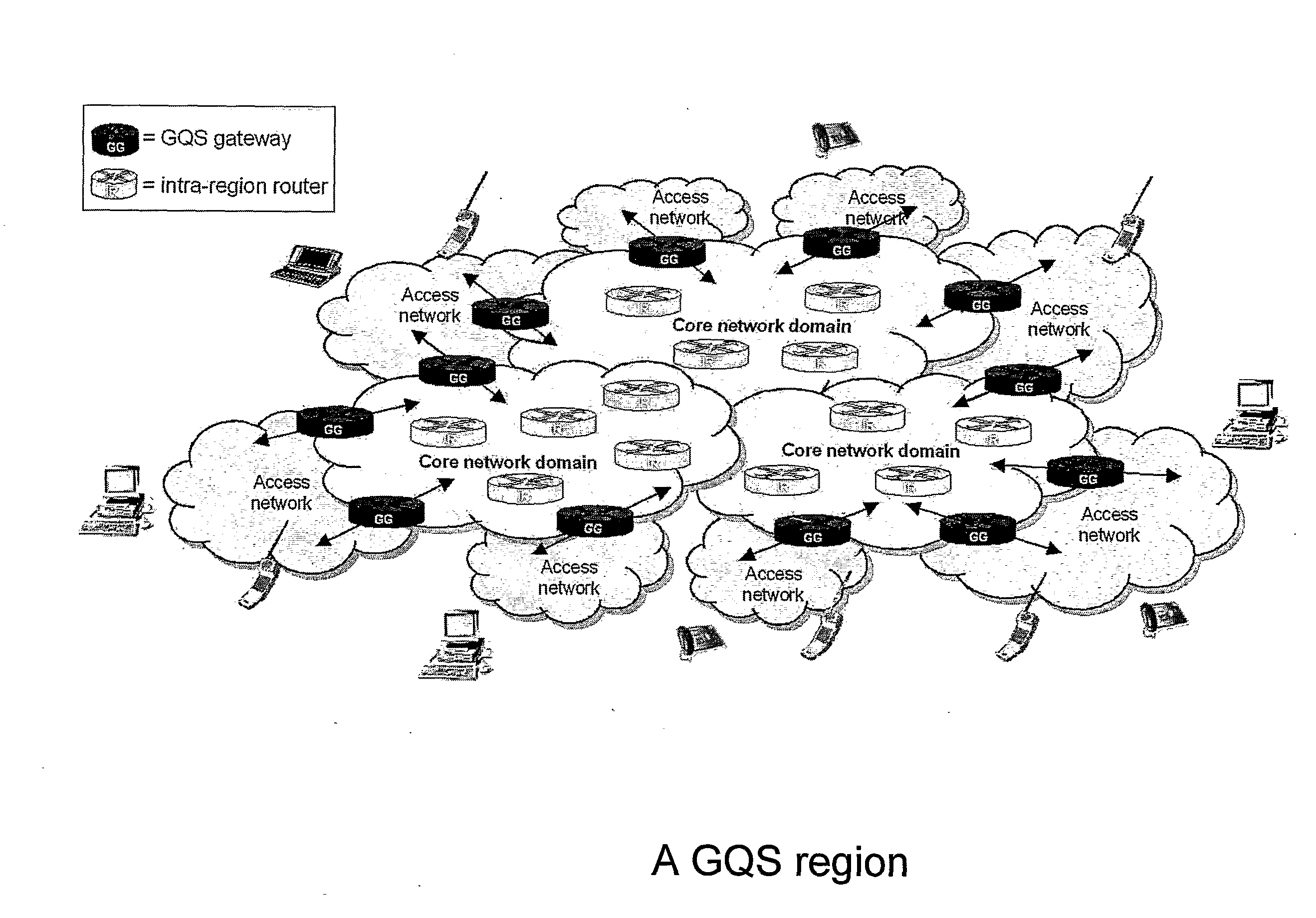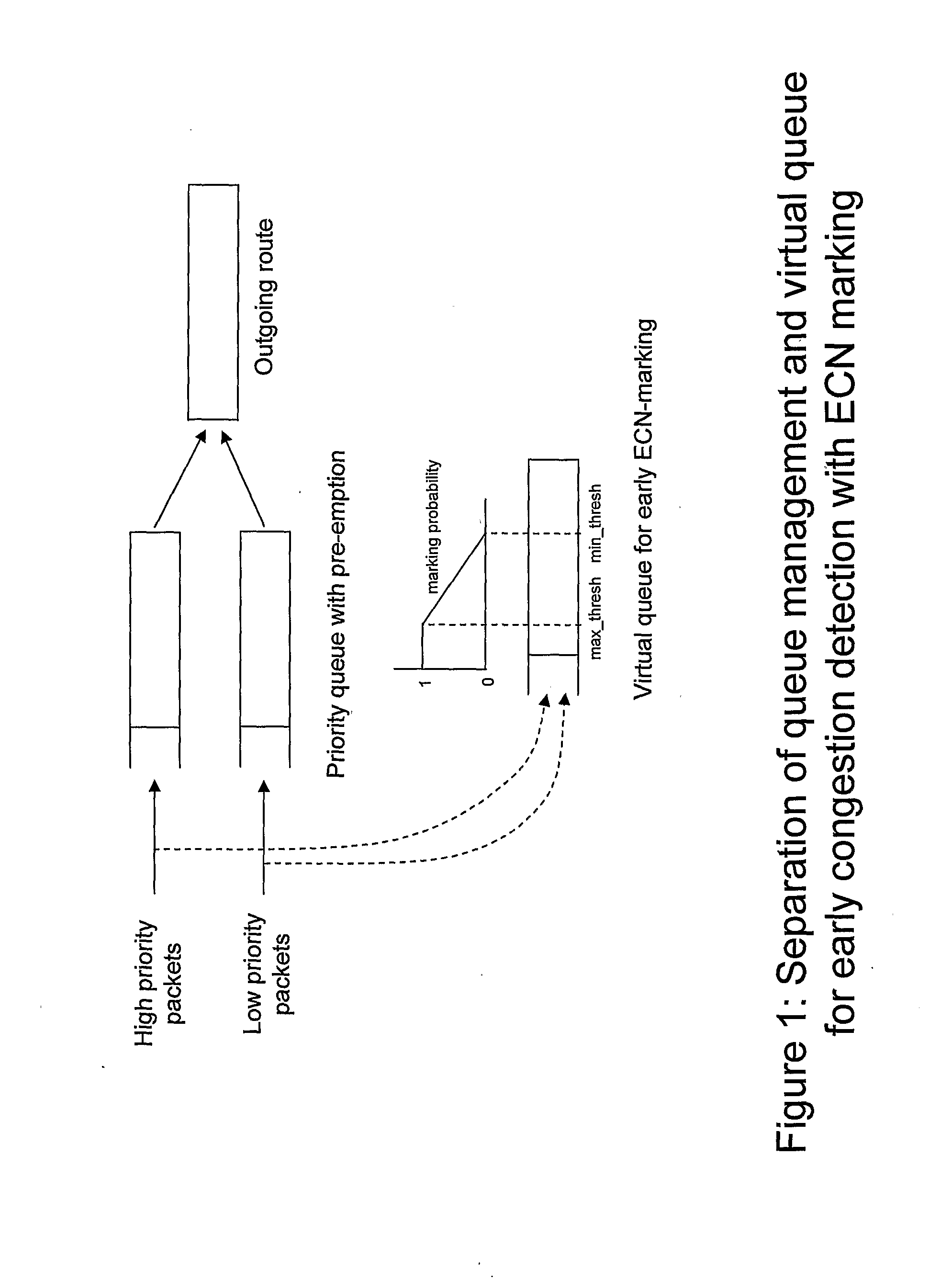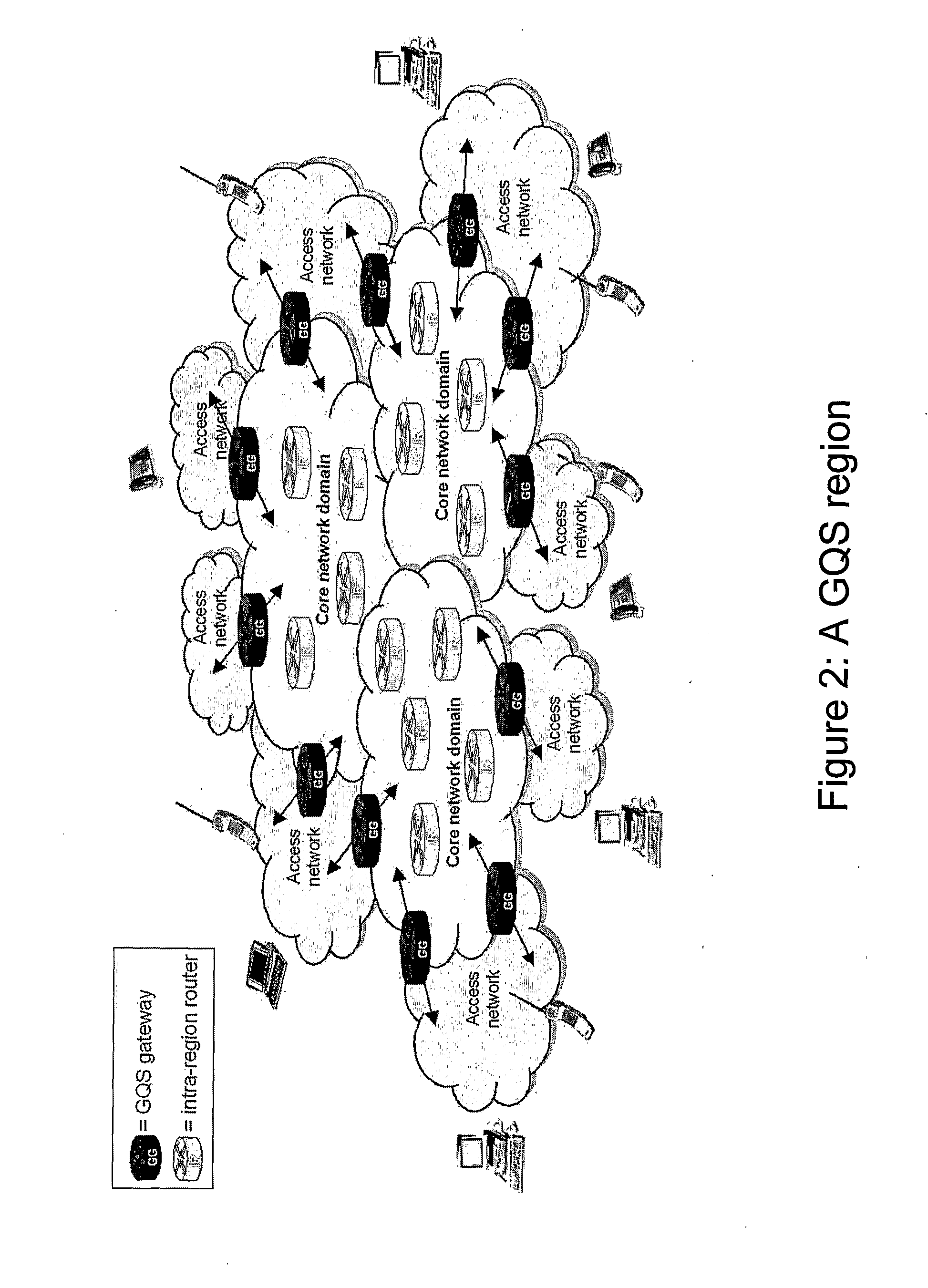Packet Forwarding
a packet forwarding and packet technology, applied in the field of packet forwarding, can solve the problems of not being able to adapt the rate at all, not being able to achieve ecn, and placing constraints, and achieve the effect of simple and efficien
- Summary
- Abstract
- Description
- Claims
- Application Information
AI Technical Summary
Benefits of technology
Problems solved by technology
Method used
Image
Examples
Embodiment Construction
[0043]The embodiment of the invention that we describe here is an extension of the virtual queue congestion detection mechanism, and is designed to enable distinct minimum bandwidth guarantees to be provided for each of two or more traffic classes. According to the embodiment, each traffic class has associated with it a corresponding counter which filters packets of that class into what can be thought of as a virtual queue. The counter acts as a form of continuous rate token bucket. If the traffic class has low priority (or equal priority to other classes) then the counter filters out packets of that class up to rate M(B), which is the rate by which the counter is incremented (the token rate).
[0044]Specifically, the counter is decremented by the size of each new packet provided that the counter would not then become negative. The packet which thereby receives a token is not then offered to the virtual queue and receives no congestion indication. If the counter would become negative ...
PUM
 Login to View More
Login to View More Abstract
Description
Claims
Application Information
 Login to View More
Login to View More - R&D
- Intellectual Property
- Life Sciences
- Materials
- Tech Scout
- Unparalleled Data Quality
- Higher Quality Content
- 60% Fewer Hallucinations
Browse by: Latest US Patents, China's latest patents, Technical Efficacy Thesaurus, Application Domain, Technology Topic, Popular Technical Reports.
© 2025 PatSnap. All rights reserved.Legal|Privacy policy|Modern Slavery Act Transparency Statement|Sitemap|About US| Contact US: help@patsnap.com



